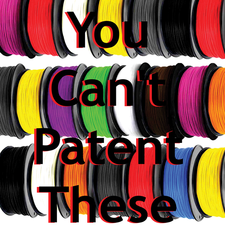How to kill patent trolls before they are born
The Best Defense is a Good Offense

© cc-BY-SA 3.0 Jim Pearce
Lazy minds equate patent rates with innovation rates and are happy to see steady increases in the number of patents issued each year. Modern scientists and innovators know better.
One of the last sources of information you run to when you are trying to design something new is the patent literature. Instead, innovators go to the scientific literature of the public domain and collaborative commons. As Linux developers know well, some of the most promising technologies have enormous churn in open source communities, as well as the patent system.
The rising number of patents [1] is concerning because it could actively slow creativity in the collaborative commons. Although the problems with software patents and trolls are well known [2], the academic literature is overflowing with examples of how patents retard technological progress in all manner of disciplines (e.g., nanotechnology [3], drugs [4], everything but drugs [5], and everything [6]).
Consider, for example, 3D printing with the RepRap (self-replicating rapid prototyper 3D printer) community [7] butting heads with the proprietary Goliaths like 3D Systems and Stratasys. Three-dimensional printing is potentially a massively disruptive technology set to unshackle innovation while slashing consumer prices by enabling distributed manufacturing in the home [8]. It is beginning to touch everyone as it is being used in a growing number of fields, including manufacturing, biomedical, design, energy, defense, and transportation industries. Already more than a third [9] of engineering jobs may require applicants to be familiar with 3D printing, so you can expect it to play a large and positive role in your life going forward – that is, if the patent trolls are kept at bay.
[...]
Buy this article as PDF
(incl. VAT)
Buy Linux Magazine
Subscribe to our Linux Newsletters
Find Linux and Open Source Jobs
Subscribe to our ADMIN Newsletters
Support Our Work
Linux Magazine content is made possible with support from readers like you. Please consider contributing when you’ve found an article to be beneficial.

News
-
Another Linux Malware Discovered
Russian hackers use Hyper-V to hide malware within Linux virtual machines.
-
TUXEDO Computers Announces a New InfinityBook
TUXEDO Computers is at it again with a new InfinityBook that will meet your professional and gaming needs.
-
SUSE Dives into the Agentic AI Pool
SUSE becomes the first open source company to adopt agentic AI with SUSE Enterprise Linux 16.
-
Linux Now Runs Most Windows Games
The latest data shows that nearly 90 percent of Windows games can be played on Linux.
-
Fedora 43 Has Finally Landed
The Fedora Linux developers have announced their latest release, Fedora 43.
-
KDE Unleashes Plasma 6.5
The Plasma 6.5 desktop environment is now available with new features, improvements, and the usual bug fixes.
-
Xubuntu Site Possibly Hacked
It appears that the Xubuntu site was hacked and briefly served up a malicious ZIP file from its download page.
-
LMDE 7 Now Available
Linux Mint Debian Edition, version 7, has been officially released and is based on upstream Debian.
-
Linux Kernel 6.16 Reaches EOL
Linux kernel 6.16 has reached its end of life, which means you'll need to upgrade to the next stable release, Linux kernel 6.17.
-
Amazon Ditches Android for a Linux-Based OS
Amazon has migrated from Android to the Linux-based Vega OS for its Fire TV.

